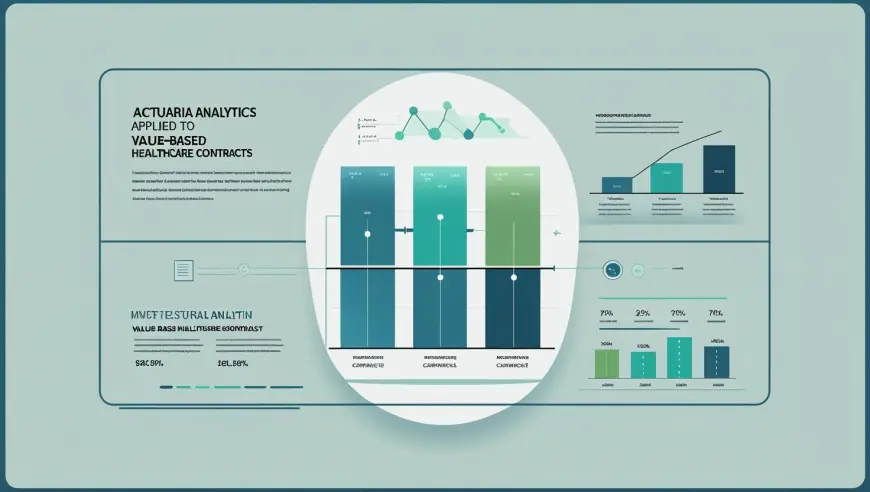Actuarial Analytics in Value-Based Healthcare Contracts
As contracts become more performance-based, actuarial analytics are emerging as the backbone of cost prediction and outcome measurement.

The shift from fee-for-service to value-based care (VBC) has made accurate forecasting and risk modeling essential in healthcare. As contracts become more performance-based, actuarial analytics are emerging as the backbone of cost prediction and outcome measurement.
Gone are the days when actuarial modeling was confined to insurance firms calculating premiums. Today, health systems, accountable care organizations (ACOs), and health tech platforms rely on predictive analytics to build smarter contracts, optimize provider networks, and navigate complex reimbursement environments.
This evolution gained traction with recent moves like Innovaccer’s acquisition of Humbi AI, signaling the integration of actuarial tools directly into care delivery systems—a shift that’s turning data into real-time clinical and financial strategy.
What Is Actuarial Analytics in Healthcare?
At its simplest, actuarial analytics applies mathematical models to health data to forecast risks, outcomes, and costs. But in today’s digital era, it's not just about analyzing static claims data.
Modern actuarial models ingest vast streams of structured and unstructured data—EHRs, patient demographics, socioeconomic factors, chronic conditions, lab results, and even behavior patterns—to simulate the future. These tools allow healthcare organizations to predict high-cost patients, model intervention ROI, and ensure financial viability under new reimbursement models.
This predictive power supports various VBC structures such as:
-
Shared savings contracts
-
Bundled payments
-
Capitated models
-
Performance-based incentives
By understanding risk-adjusted cost trajectories, health organizations can plan proactive care strategies that both improve outcomes and control spending.
Case Study: Innovaccer’s Push Toward Integrated Actuarial Systems
The acquisition of Humbi AI by Innovaccer is more than just a business deal—it reflects a new trend where healthcare platforms seek embedded intelligence. Humbi brings actuarial modeling directly into Innovaccer’s Health Cloud, empowering providers with:
-
Cost simulation dashboards
-
Patient risk scoring
-
Network performance analytics
-
Reimbursement optimization models
What makes this powerful is the accessibility. Rather than relying on back-end actuaries or consultants, care teams and administrators can now interact with actuarial insights in real-time. This democratization of data helps bridge the gap between clinical teams and finance departments—ensuring everyone works from the same predictive playbook.
How Actuarial Analytics Enhances Value-Based Contracting
Here’s how these advanced Data analytics directly improve value-based care agreements:
1. Risk Stratification
Actuarial tools can segregate patient populations based on future care needs and costs. This is critical when negotiating contracts based on shared risk or savings.
2. Predictive Reimbursement Modeling
Instead of guessing reimbursement based on past claims, providers can simulate financial outcomes based on different care strategies or policy changes—especially useful in Medicare Advantage or Medicaid contracts.
3. Performance Benchmarking
Health systems can compare their data to regional/national standards, identifying outliers in readmission rates, procedure costs, or care quality.
4. Intervention Targeting
With insights into who’s likely to be hospitalized or miss follow-up visits, care teams can deploy resources more efficiently, improving patient outcomes and ROI.
Challenges: Accuracy, Ethics, and Adoption
Despite the benefits, applying actuarial analytics at scale brings unique hurdles:
Data Integrity
For models to work, the input data must be clean, complete, and timely. Many EHRs still lack standardization, and missing fields can skew predictions.
Bias in Models
If training data reflects systemic healthcare disparities, models may reinforce existing inequalities. Bias detection and mitigation are essential in predictive systems.
Transparency and Explainability
Healthcare providers need to understand how risk scores or forecasts are generated. Black-box models won’t be trusted—or adopted.
Privacy and Governance
As actuarial tools access highly sensitive patient data, they must adhere to HIPAA, GDPR, and other regulatory frameworks. Proper consent and anonymization protocols are non-negotiable.
Future Outlook: The Actuary as a Clinical Ally
In the coming years, actuarial intelligence won’t just support finance teams—it’ll become a daily tool for clinicians. Embedded directly into clinical dashboards, predictive models will inform decision-making at the bedside:
-
Should this diabetic patient receive case management?
-
Is this COPD patient at risk for readmission?
-
Will these changes in care pathways reduce total cost of care?
Through natural language interfaces and real-time alerts, physicians and care coordinators can use these insights without needing data science expertise.
Also on the horizon: federated learning models, which allow AI tools to learn from patient data across systems—without ever moving the data—further strengthening both privacy and accuracy.
Conclusion
As healthcare costs continue to climb and reimbursement models evolve, organizations must embrace actuarial analytics not as an option, but as a necessity. The integration of predictive tools into core workflows—like we’re seeing with Innovaccer and Humbi—makes it possible to align clinical performance with financial outcomes.
For providers, this means greater control over contract design and execution. For patients, it promises more proactive, targeted care. And for payers, it ensures that value—not just volume—is rewarded.
What's Your Reaction?
 Like
0
Like
0
 Dislike
0
Dislike
0
 Love
0
Love
0
 Funny
0
Funny
0
 Angry
0
Angry
0
 Sad
0
Sad
0
 Wow
0
Wow
0
















































